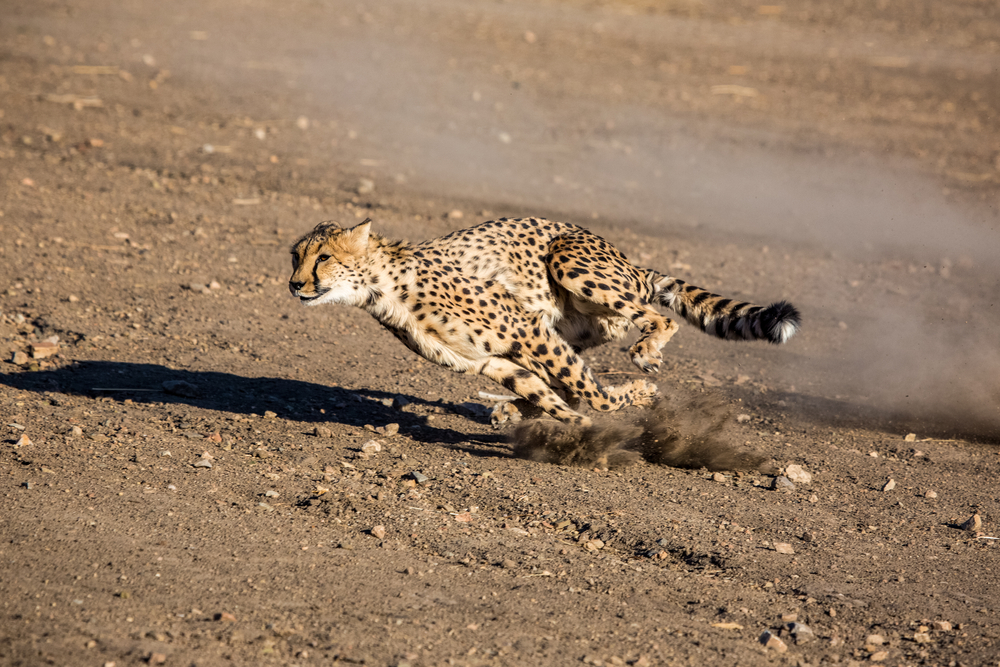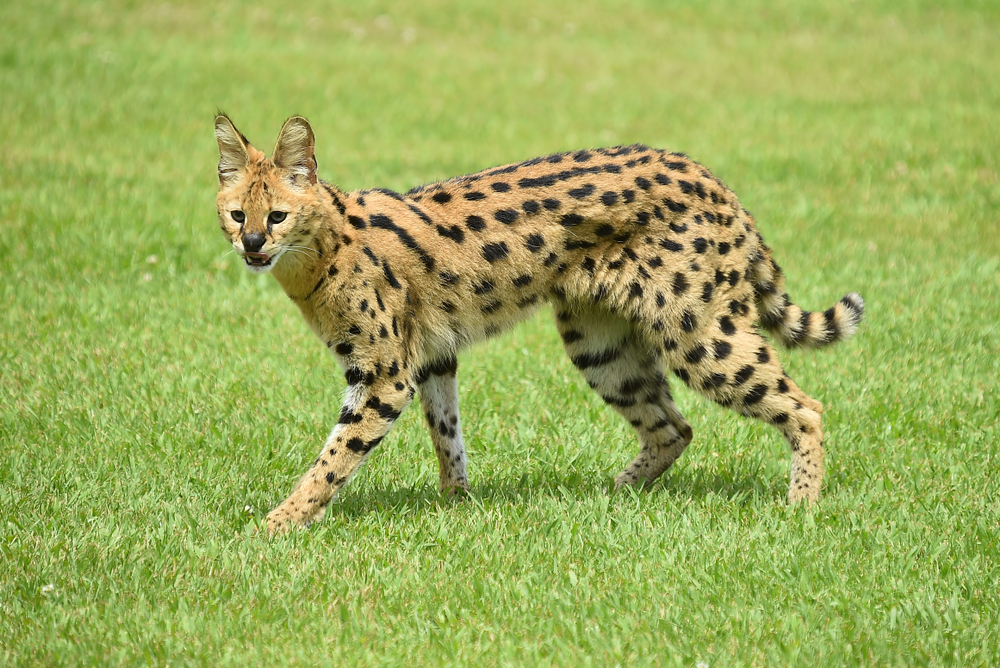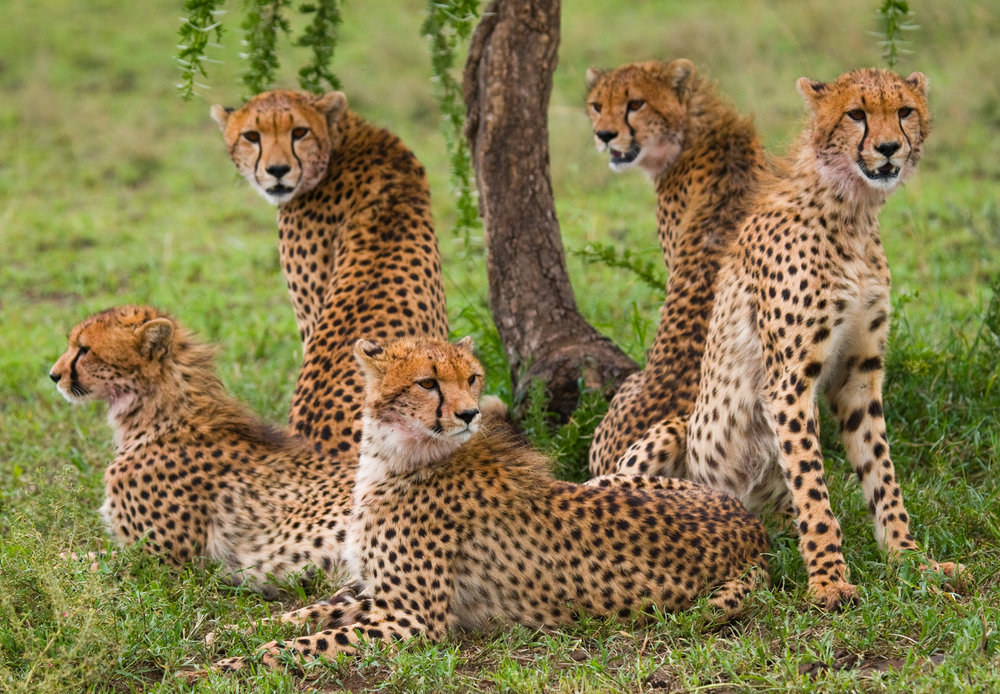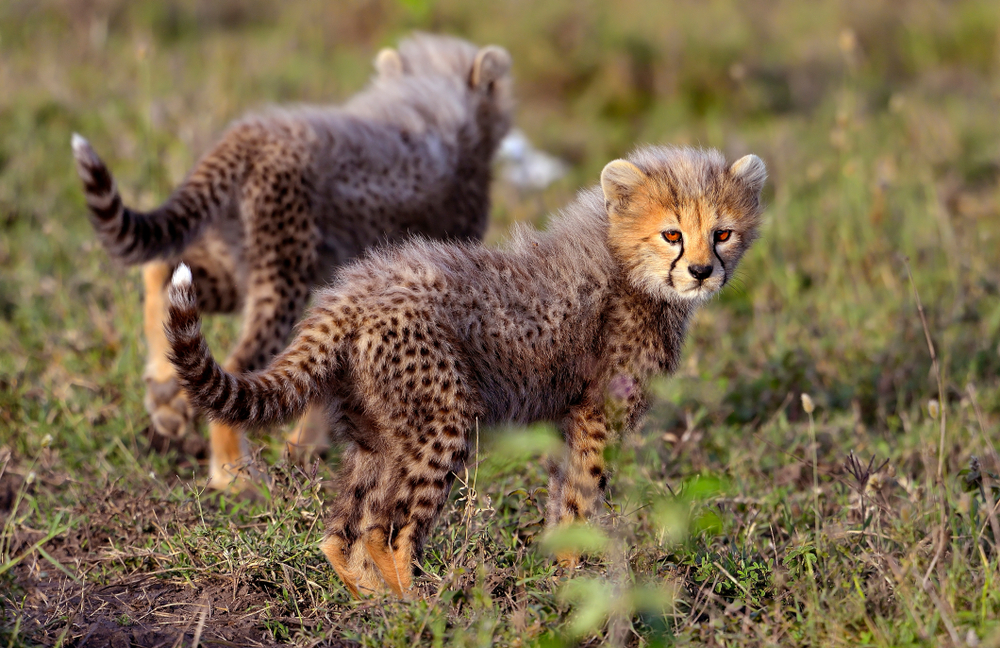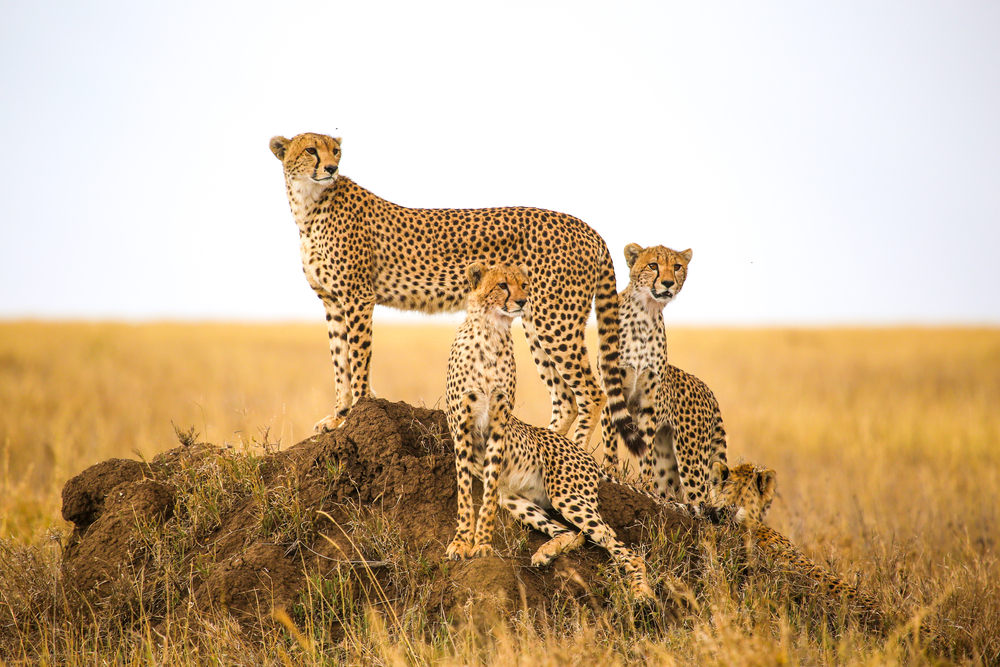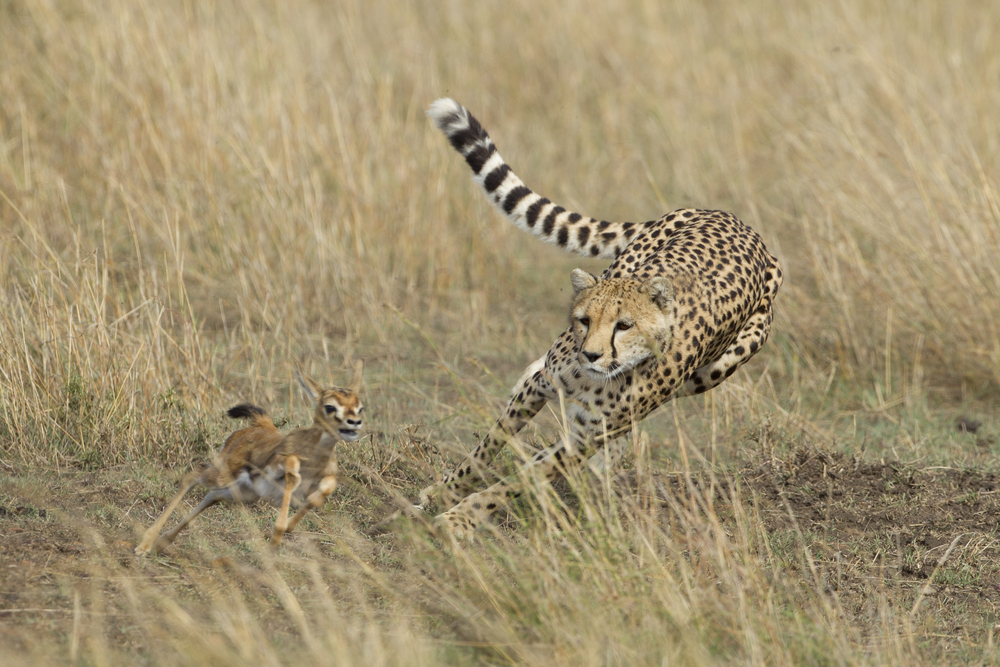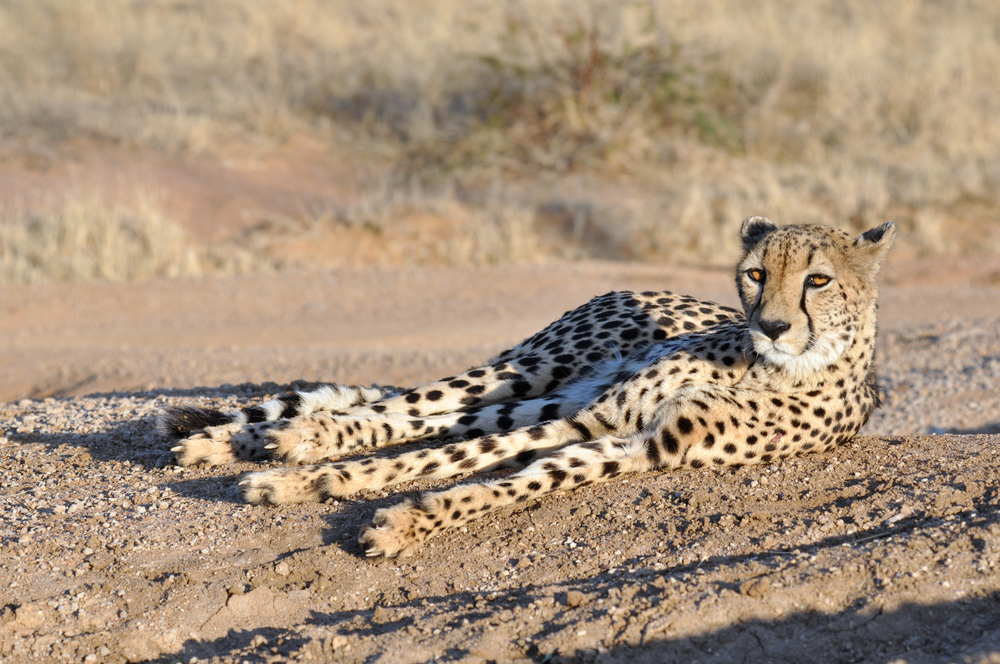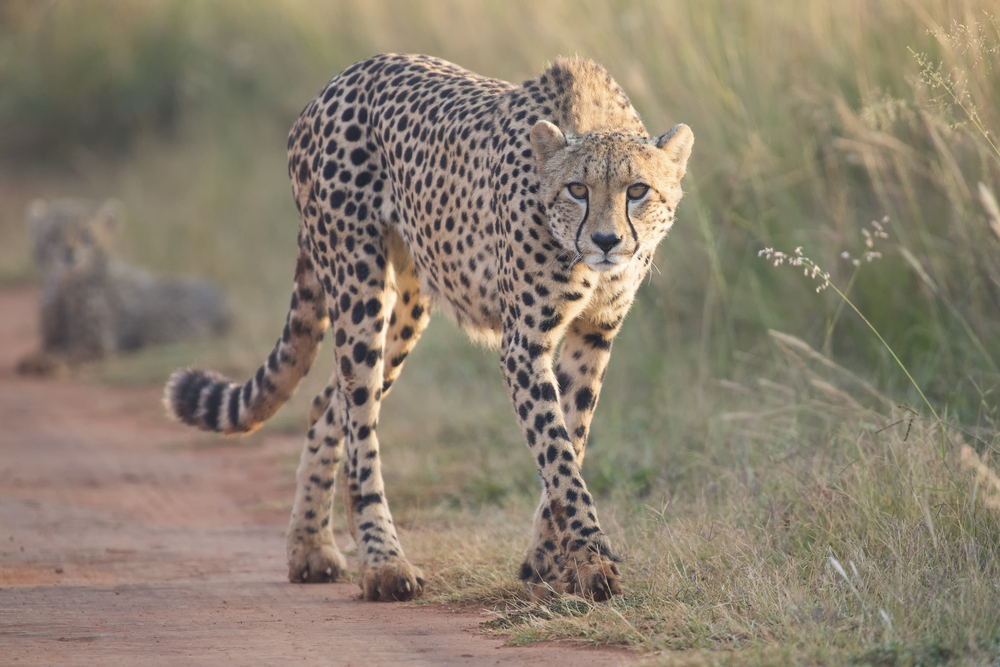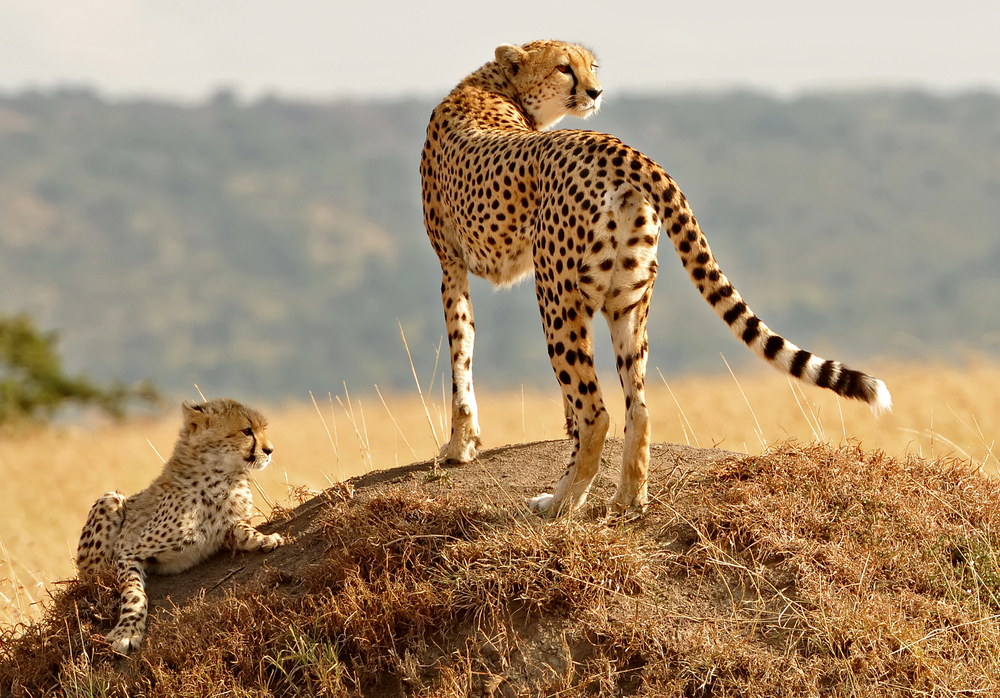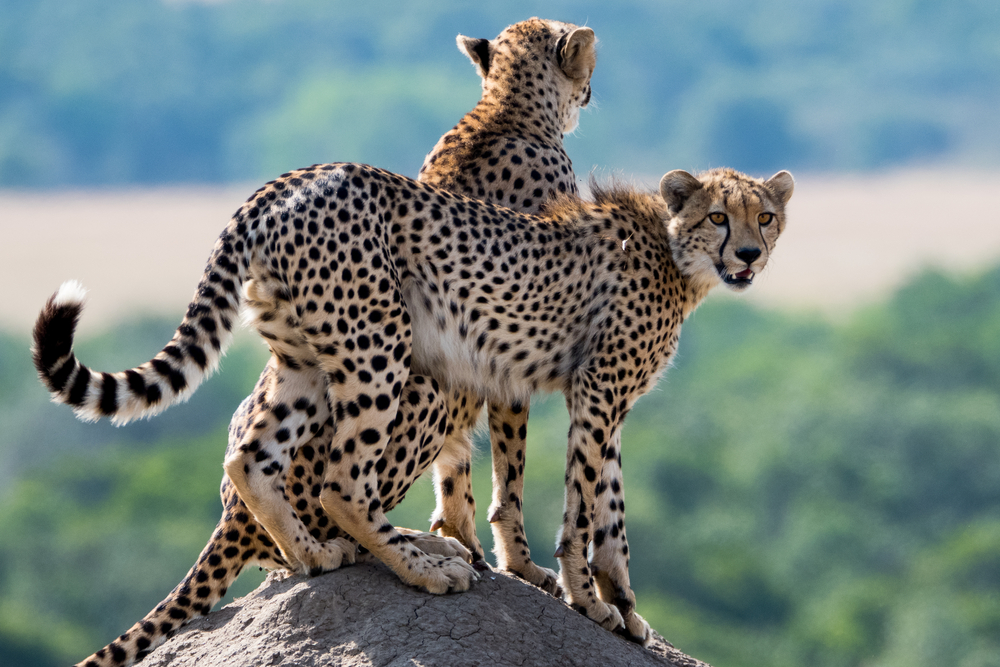About
#Big Cats
#Carnivores
#Mammals
The Cheetah, scientifically known as Acinonyx jubatus, is a magnificent big cat species found primarily in Africa, with a small population also inhabiting Iran. It belongs to the Felidae family within the Animal Kingdom’s order Carnivora, which also includes other felines like lions, tigers, and leopards.
Cheetahs are renowned for their exceptional speed and agility, capable of reaching speeds of up to 60 to 70 miles per hour in short bursts, making them the fastest land mammals. They have slender, aerodynamic bodies, long legs, and a distinctive spotted coat ranging from golden-yellow to tan, adorned with solid black spots. Their tear-shaped black marks running from the inner corners of their eyes down to their mouths help reduce glare from the sun and aid in hunting.
As specialized predators, cheetahs primarily hunt during the day, relying on their keen eyesight to spot prey from a distance. They favor open grassland habitats, where they can use their speed to pursue and capture swift ungulates such as gazelles and impalas. Unlike other big cats, cheetahs have smaller heads and non-retractable claws, adaptations suited for their unique hunting strategy.
Conservation Needs and Status
Cheetahs face numerous conservation challenges, including habitat loss, human-wildlife conflict, poaching, and a decline in prey species. As a result, the International Union for Conservation of Nature (IUCN) classifies cheetahs as vulnerable on the Red List. Population estimates suggest there are around 7,000 cheetahs left in the wild, scattered across Africa and Iran.
Conservation efforts aimed at protecting cheetahs involve habitat preservation, anti-poaching measures, community engagement, and education initiatives. Captive breeding and reintroduction programs also play a role in bolstering cheetah populations. However, addressing human-cheetah conflicts and ensuring the sustainable management of habitats remain critical for the long-term survival of this iconic species. Continued monitoring and concerted conservation actions are essential to secure a future for cheetahs in the wild.
Threatened:
Extinct
Critically Endangered
Endangered
Vulnerable
Near Threatened
Least Concern




































































